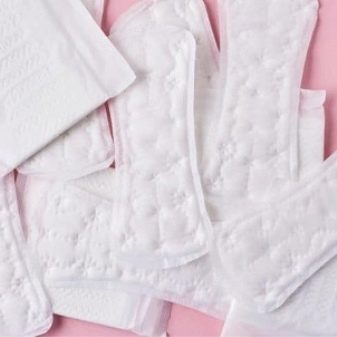All About Feminine Sanitary Pads
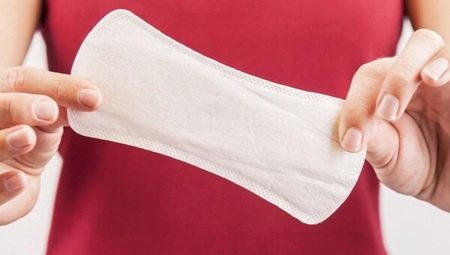
Sanitary pads have been in women's bathrooms for more than three decades, and it is difficult to imagine a woman's intimate hygiene without this item. How much do the users know about the subject that accompanies them several days a month? It's time to figure it out.


General description and purpose
Feminine sanitary pads are a versatile product, the main purpose of which is to prevent the ingress of natural secretions on the linen. They do not cure, do not affect the body as a cosmetic product, but only help to maintain hygiene. Of course, they are not monopolists in this market: there are tampons, there is a menstrual cup, which also serve the same purpose. Still, this alternative is much less popular.
The first commercial sanitary towels were called Lister Towels, and for the prim time they were created (late 19th century), they were avant-garde. Women continued to use homemade padding, particularly cotton wool. In the 20s of the twentieth century, Kotex goods appeared in stores - the first similar to modern disposable pads. True, they were expensive. A breakthrough year can be considered 1931, when Earl Haas registered a patent for a tampon, but pads with adhesive tape will appear only after 30 years.
Now the production of panty liners caters to women's needs in a wide variety of variations: it produces products for every day, pads for sensitive skin, perfumed products and much more. They have become accessible, comfortable, and most importantly, they have helped women get rid of many delicate problems.
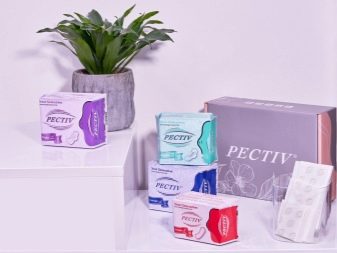

Species overview
There are more than 3 of them, but there are just so many large categories.
For critical days
This is the most demanded product in the world, because it solves the problem of preventing menstrual flow from unwanted marks on clothes. Pads used on menstruation have come a long way - from uncomfortable, completely non-adaptable to the anatomy of pads to subtle hygiene products with which you can play sports, dance, ride a bike and much more.
What are the pads for menstruation:
- with and without wings - the former, of course, are more convenient, but the production of the latter has not yet stopped, which means that there is demand;
- daytime - as a rule, they are thin and not very long, inside there is a gel filler, and on top there is an absorbent layer;
- night - they are made of softer material, they are thicker than daytime ones, longer so that you do not get up at night every 2-3 hours to replace the product.
All of these pads are disposable and should not be reused in any situation, as it can be dangerous.
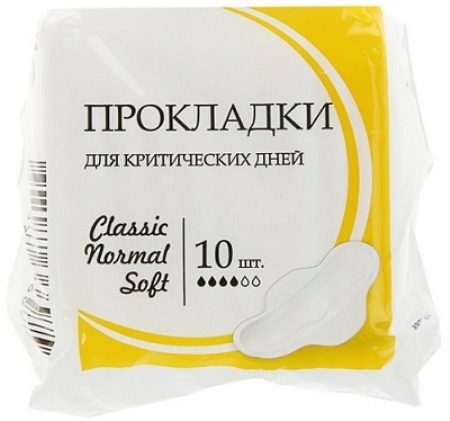
Gynecological
These products are mainly intended for for postpartum use. Discharge that accompanies a woman after childbirth for up to 6 (on average) weeks is called lochia... They are physiological, abundant at first and also require the use of hygiene products. Ordinary pads may not be able to cope with abundant discharge, and then the gynecological segment of the products is required.
They are the largest, capable of absorbing up to 900 ml of liquid. The material is sterile, which means that the risk of infection is excluded, which is especially important for an organism undergoing postpartum recovery. Some types of these pads can be impregnated with antiseptics. They are also used after other serious medical interventions accompanied by vaginal discharge.
These pads, if not completely natural, are as close to them as possible.... This eliminates the risk of developing a greenhouse effect harmful to the female genital area. By the way, the doctors themselves insist that women use such pads after childbirth, because ordinary ones can cause unwanted reactions.

Daily
The name itself explains a lot, but this explanation is erroneous. What women call dailies does not need to be worn every day. This is unreasonable and simply dangerous. Soft and thin pads should be used on certain days of the cycle when the discharge is thicker and more abundant and the laundry should be protected from it. At other times, a healthy woman needs regular washes and a timely change of underwear.
And also the thinnest daily can help out in the last days of menstruation, when discharge is rare and it is not profitable to use a regular pad. Sometimes women who suffer from mild urinary incontinence are forced to wear daily pads. If the problem is more pronounced, gaskets cannot be dispensed with here, medical attention is needed.

Dimensions (edit)
First of all, you need to focus on the number of droplets on the package. And also the choice of size will depend on the type / size of the laundry and the abundance of discharge. As noted, pads used during sleep should be thicker and have a longer back (to prevent nighttime leaks).
Here's how to figure out the drops on the packaging.
- 1-2 drops - These are pads for low secretions. They may work for teenage girls who have very little periods. Often such pads are used in the last days of menstruation, which, in contrast to the first, are often characterized by weak discharge.
- 3-4 drops - pads for menstruation with moderate discharge. This is considered the most requested option, although many women tend to be reinsured.
- 5 drops - products for heavy periods, usually bought in the first days of menstruation. And also such gaskets are used if it is assumed that the next change of means is not possible as quickly as it should be done ideally.
- Nighttime 5 drops - elongated gaskets with a filler with a large absorbent so that leaks cannot disturb at night.
The amount of discharge can be small, medium, and heavy. This is the first criterion for choosing the size of the shims. And also it is worth evaluating the size of the laundry: if small / short ones are suitable for S, then M and L will no longer be able to serve such pads.

Top brands
There are a lot of them, often this is a matter of taste, habit, convenience. These names sound almost in any rating.
- Always - an inexpensive segment, but demand and popularity are always at the top. You can find in the line both ultra-thin pads that will be invisible under the most tight-fitting clothes, as well as products for a comfortable sleep, for heavy periods and others. Provides fast absorption, protection up to 12 hours, no odors.
- Naturella - the product also belongs to the budget segment. These pads are distinguished by a soft top layer, which eliminates irritation of the skin. Many species have natural aromatization, pleasant floral aromas. The manufacturer claims one of the advantages of organic hypoallergenic fibers in the composition of the product.
- Bella - also cheap pads, which are divided into different types, are sold even in variations without wings. This is a classic that accompanies many women from their youth, and they are in no hurry to switch to more expensive options.
- Libresse - most of the products produced by this brand are very thin, specially designed for comfortable wearing. The pads are odor-proof, available with a soft or mesh surface, and provide a gentle and comfortable fit.
- Carefree - their shape is designed to repeat the lines of the bikini area. They are delicate, made taking into account all delicate nuances. The emphasis is on the fact that when wearing a woman forget that she is wearing a pad.
In the category of gynecological products, the brands Peligrin and Helen Harper can be noted, and Discreet and Ola constantly fall into the group of the best panty liners.
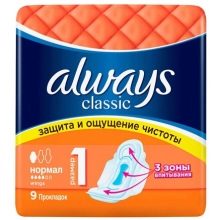
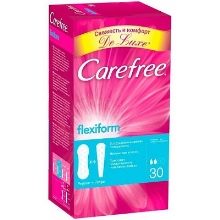

Which gaskets to choose?
The choice consists of a whole list of categories. The age of the woman, the time of day (for night or day, gaskets are chosen), the method of attachment, material, composition, the abundance of secretions are taken into account. Expert advice.
- Best gaskets - cotton, and it must be 100% cotton. The fewer chemical inclusions in the composition, the better for women's health, regardless of the age of the customer.
- Fragrance free pads are better, even if only in connection with the minimization of allergic risks. Aromatization is always fraught with skin irritation and the development of real allergies. Moreover, it weakly masks natural odors.
- Individually wrapped items should be a priority... And this also applies to the daily routine too. So you can guarantee the sterility of such an intimate product.
- For a girl who has just started her period, her mother usually buys pads... And then he shares his own. But it's better to go to the doctor, discuss the onset of the crucial moment. with a specialist, who will listen to the girl, evaluate the course of events, the regularity of the cycle, the abundance of discharge, and advise the best option. Of course, these must be cotton pads. And from the first months of menstruation, a girl should be taught not to hesitate to buy pads herself, to be able to read the information on the packaging.
- Different pads should be used for night and day... Even if you leave the well-absorbing daylight overnight, the risk of leaks still remains. And there is nothing good in the fact that for so many hours in a row, the discharge will be concentrated on a small amount of matter. Night pads are both bulky and longer, they are safer.
Do not buy gaskets in places of questionable trade. It is not known where the goods came from, how they were stored.
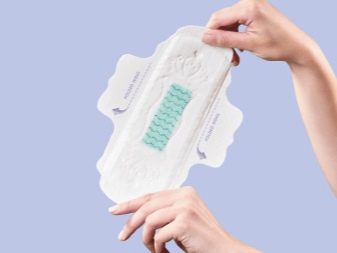
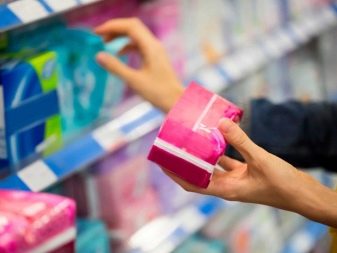
Features of use
It turns out that women can violate the rules for using intimate funds for years without knowing it.
Let's consider a short instruction.
- Before changing the gasket, you need to wash your hands with soap and water.... The genitals should be washed in the direction from the pubis to the anus, and not vice versa. Dry with an intimate towel. If it is not there (for example, it happens in a public toilet), you can use napkins, paper handkerchiefs.
- Take the gasket out of the individual packaging, unfold, peel off all the protective papers... With the sticky part, the product is glued to the panties. The wings wrap around the edges of the briefs so that the pad fits snugly against the underwear.
- Dispose of the used gasket as follows: wrap it in a new packaging or toilet paper and throw it in the trash can. In no case in the toilet.
The shelf life of the pads is usually indicated on the packaging, on average, the rate of this indicator is 2 years.
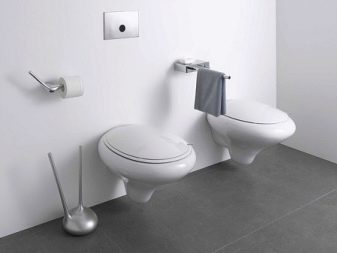
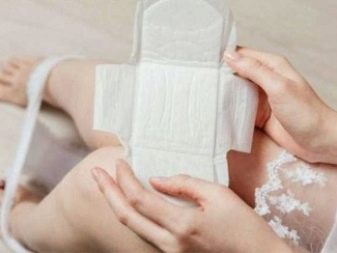
Storage nuances
By the way, the fact that these products are stored in the bathroom may be logistically convenient, but wrong. The microclimate of this zone itself is not suitable for storage: the pad can quickly become damp, which will negatively affect its absorbent properties. A couple of pieces can always be carried in the inner pocket of a women's handbag in case of force majeure. But these must be individually wrapped gaskets.
Everything else is conveniently stored in the underwear drawer. The place should be dry, dark, cool. It is good to have a supply of gaskets at home, again, so as not to run to the store for the first ones in case of urgent need.
Pads are very different, and a woman should understand which ones are right for her: sit comfortably, do not rub the skin, do not cause irritation... It doesn't have to be a random product, but it's about intimate hygiene. What works for one is completely inapplicable for the other. Therefore, through trial and error, and sometimes by keeping a diary of self-observation, the ideal choice can be made.

